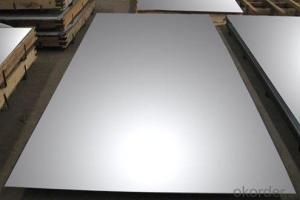304 Stainless Steel Sheet
- Loading Port:
- Shanghai
- Payment Terms:
- TT OR LC
- Min Order Qty:
- 1 kg
- Supply Capability:
- 42000 kg/month
OKorder Service Pledge
OKorder Financial Service
You Might Also Like
1.Descripiton:
304 Stainless steel plate with high surface finish, high plasticity, toughness and mechanical strength, acid, alkali gas, solution and other corrosive media. It is a kind of alloy steel not easy to rust, but it is not absolutely not rusty.
According to the method of divided into two kinds of hot rolling and cold rolling, and according to the characteristics of the steel group is divided into five categories: Austenitic, austenitic iron body, iron body, martensitic, precipitation hardening type. Can withstand the corrosion of oxalic acid, sulfuric acid and ferric sulfate, nitric acid, nitric acid and hydrofluoric acid, copper sulfate sulfuric acid, phosphoric acid, formic acid, acetic acid, etc. all kinds of acid, widely used in chemical, food, medicine, paper making, petroleum, nuclear energy and other industries, as well as the construction, kitchen utensils, cutlery, vehicles, household appliances, all kinds of spare parts requirements.
2.Product characteristic:
304 stainless steel plate surface appearance and the use of the possibility of diversification
Good corrosion resistance, durable than ordinary steel
304 stainless steel plate corrosion resistance is good
High strength, and thus the possibility of using thin plate
High temperature resistance and high strength, so can fire resistance
Normal temperature processing, that is easy to plastic processing
Because no surface treatment, so simple, simple maintenance
Clean, clean and high
Good welding performance
3.Specification:
Stainless steel plate according to the system method of hot rolling and cold rolling of the two, including the thickness of 0.02-4 mm and 4.5-100 mm thick plate.
4.Reference picture
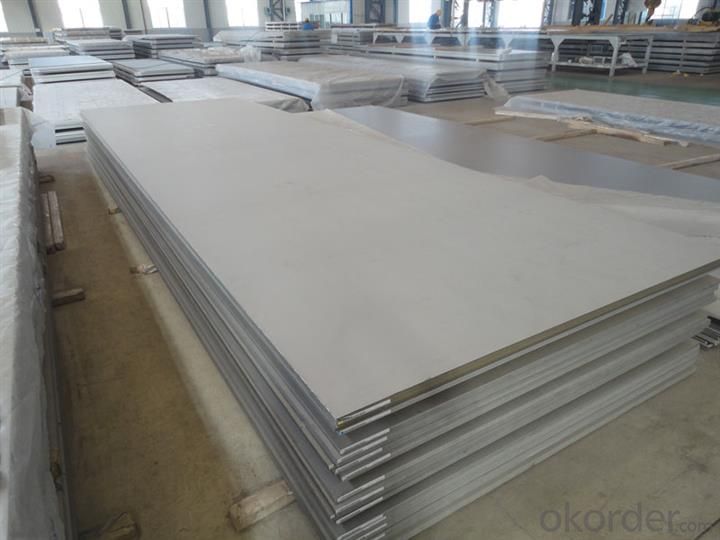
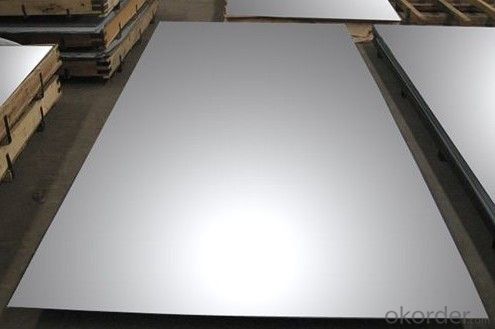
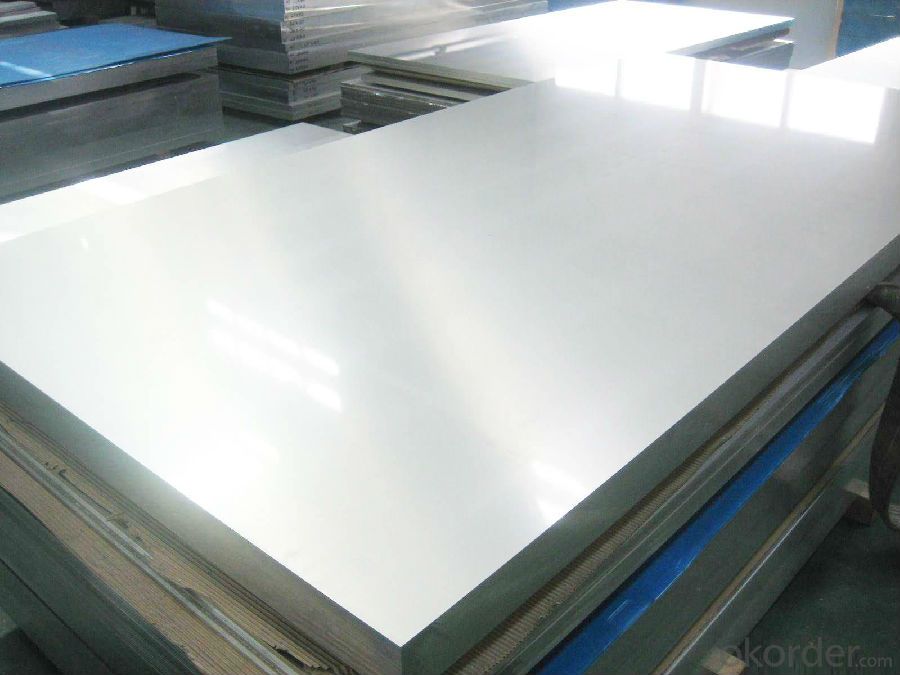
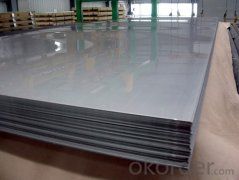
- Q:What are the different types of steel coil surface treatment options?
- There are several types of steel coil surface treatment options, including galvanizing, painting, chromating, and pickling. Galvanizing involves coating the steel with a layer of zinc to protect it from corrosion. Painting involves applying a layer of paint to enhance the appearance and provide additional protection. Chromating is a chemical process that forms a thin layer of chromate on the surface to improve corrosion resistance. Pickling involves removing impurities and scale from the steel surface using an acid solution.
- Q:What is the process of pickling and oiling steel coils?
- The process of pickling and oiling steel coils involves several steps to ensure the quality and protection of the steel. Firstly, pickling is the process of removing impurities and scale from the surface of the steel coil. This is typically done by immersing the coil in an acid bath, such as hydrochloric acid or sulfuric acid, which helps to dissolve any oxides, rust, or other contaminants present on the surface. This step is crucial as it prepares the steel for further processing and prevents any potential defects or corrosion. After pickling, the steel coils are rinsed with water to remove any residual acid and then dried. Once the coils are clean and dry, they are then coated with a layer of oil to provide temporary corrosion protection and lubrication during subsequent handling and transport. The oil coating helps to prevent the steel from rusting or oxidizing before it is further processed or used in various applications. The oiling process can be done in several ways. One common method is by applying the oil using a roller or brush, ensuring that the entire surface of the coil is evenly coated. Alternatively, the coils can be passed through a bath or spray chamber where the oil is applied. The type of oil used can vary depending on the specific requirements of the steel and its intended use. Some common oils include mineral oil, synthetic oils, or specialized rust-preventive coatings. Once the oiling process is complete, the steel coils are typically stacked, wrapped, or packaged for storage or transportation. It is important to handle the coils carefully to avoid damaging the oil coating and compromising the corrosion protection. Overall, pickling and oiling steel coils are essential steps in the steel manufacturing process to ensure the quality, cleanliness, and protection of the steel, ultimately extending its lifespan and enhancing its performance in various applications.
- Q:What are the different types of steel coil loading and unloading methods?
- There are various methods for loading and unloading steel coils, including overhead crane systems, coil lifters, coil hooks, C-hooks, coil tippers, and coil carriages. Each method is suited for different coil sizes, weights, and handling requirements.
- Q:A song by brokencyde is called Blue Steel.... a verse in it says Don't make me show you blue steel.
- Actually, it is a reference to the movie Zoolander, which is a comedy. Ben Stiller's character (Zoolander) is a fashion model (and assassin) and he gives names to the poses he takes in front of the camera. One of the poses, which nobody can supposedly resist, is called Blue Steel. Although bluing is something that actually is done to gun metal to harden it (i.e. heating/plating with nickel), that is not what this particular song is referring to.
- Q:What are the common applications of hot-dip galvanized steel coils?
- Hot-dip galvanized steel coils have a wide range of applications due to their excellent corrosion resistance and durability. Some of the common applications of hot-dip galvanized steel coils include: 1. Construction: Hot-dip galvanized steel coils are extensively used in the construction industry for various applications such as roofing, siding, gutters, and downspouts. The corrosion resistance of these coils makes them ideal for withstanding harsh weather conditions, ensuring long-lasting and low-maintenance structures. 2. Automotive: Hot-dip galvanized steel coils are widely used in the automotive industry for manufacturing parts like body panels, frames, chassis, and structural components. The corrosion resistance and high strength of these coils provide enhanced protection against rust and ensure the longevity of automotive parts. 3. Appliances: Hot-dip galvanized steel coils find applications in the manufacturing of various household appliances such as refrigerators, air conditioners, ovens, and washing machines. The corrosion resistance and aesthetic appeal of galvanized steel make it an ideal choice for these appliances. 4. Agriculture: Hot-dip galvanized steel coils are commonly used in the agricultural sector for building greenhouses, livestock shelters, fences, and irrigation systems. The galvanized coating protects the steel from corrosion caused by exposure to moisture and chemicals commonly found in agricultural settings. 5. Electrical and Telecommunication: Hot-dip galvanized steel coils are utilized in the electrical and telecommunication industries for the production of transmission towers, poles, cable trays, and electrical conduits. The corrosion resistance and high strength of galvanized steel ensure the safety and reliability of these infrastructure components. 6. Transportation: Hot-dip galvanized steel coils are extensively used in the transportation industry for manufacturing trailers, shipping containers, and chassis components. The galvanized coating provides protection against corrosion caused by exposure to road salt, moisture, and various environmental factors. 7. Industrial Applications: Hot-dip galvanized steel coils are employed in various industrial applications such as storage tanks, pipelines, ductwork, and industrial equipment. The corrosion resistance and durability of galvanized steel ensure the integrity and longevity of these structures and equipment. In summary, the common applications of hot-dip galvanized steel coils encompass a wide range of industries, including construction, automotive, appliances, agriculture, electrical and telecommunication, transportation, and industrial sectors. The corrosion resistance, durability, and aesthetic appeal of galvanized steel make it a versatile and widely used material in these applications.
- Q:I was wondering what material most common motorcycle gas tanks are made out of? is it steel? stainless steel? aluminum? what are the advantages and disadvantages or each?
- Aluminum Motorcycle Gas Tank
- Q:How are steel coils used in the production of HVAC ducts?
- Steel coils are an essential component in the production of HVAC ducts. These coils are typically made of galvanized steel, which provides strength, durability, and resistance to corrosion. In the manufacturing process, steel coils are first unwound and flattened to create flat sheets. These sheets are then cut into specific sizes and shapes according to the design and dimensions of the HVAC ducts. The steel coils are often processed through various machines, such as shearing machines, slitting machines, and roll forming machines, to achieve the desired shapes and sizes for the ducts. Once the steel coils are transformed into the appropriate shapes, they are then further processed to add additional features to the ducts. For instance, the coils may undergo bending, folding, or welding processes to create bends, angles, or connections in the ductwork. These processes allow for the customization of the ducts to fit the specific requirements of the HVAC system and the building structure. Furthermore, steel coils play a crucial role in ensuring the strength and integrity of HVAC ducts. The galvanized steel used in the coils provides a protective layer that prevents rust and corrosion, making the ducts more durable and long-lasting. This is especially important as HVAC ducts are often exposed to various environmental factors, such as moisture, temperature changes, and airborne contaminants. Overall, steel coils are a fundamental component in the production of HVAC ducts. They provide the necessary strength, durability, and resistance to corrosion, while also allowing for customization and flexibility in the manufacturing process.
- Q:How are steel coils used in the production of steel chains?
- Steel coils are used in the production of steel chains by being unwound and fed through a series of machines that shape, cut, and weld the steel into individual chain links. The steel coils provide a continuous and efficient source of raw material for the production process, ensuring consistent quality and strength in the final steel chains.
- Q:What are the common applications of steel coils in construction?
- Steel coils are commonly used in construction for various applications such as roofing, siding, structural framework, and reinforcement in concrete structures.
- Q:How do steel coils withstand extreme temperatures?
- The unique composition and manufacturing process of steel coils enable them to endure extreme temperatures. Steel, the primary material in coils, consists of iron and carbon, forming an alloy with exceptional thermal properties. With a high melting point of up to 2,500 degrees Fahrenheit (1,370 degrees Celsius), steel remains structurally stable even in intense heat. Additionally, the annealing process is commonly applied to steel coils. This involves heating the steel to a specific temperature and gradually cooling it down. By relieving internal stresses, annealing enhances the steel's resistance to thermal expansion and contraction. It also reduces internal defects, thereby improving the overall strength and durability of the steel, enabling it to better withstand extreme temperatures. Furthermore, protective coatings are often applied to steel coils to provide additional resistance against temperature fluctuations. These coatings, such as galvanized or zinc coatings, act as a barrier between the steel and the external environment. They effectively prevent oxidation, corrosion, and other forms of degradation that can occur when exposed to extreme heat or cold. In conclusion, the ability of steel coils to withstand extreme temperatures can be attributed to the inherent properties of steel, the annealing process that relieves internal stresses, and the protective coatings that offer an extra layer of resistance. These factors work in harmony to ensure that steel coils maintain their structural stability and performance, even in the most challenging temperature conditions.
1. Manufacturer Overview |
|
|---|---|
| Location | |
| Year Established | |
| Annual Output Value | |
| Main Markets | |
| Company Certifications | |
2. Manufacturer Certificates |
|
|---|---|
| a) Certification Name | |
| Range | |
| Reference | |
| Validity Period | |
3. Manufacturer Capability |
|
|---|---|
| a)Trade Capacity | |
| Nearest Port | |
| Export Percentage | |
| No.of Employees in Trade Department | |
| Language Spoken: | |
| b)Factory Information | |
| Factory Size: | |
| No. of Production Lines | |
| Contract Manufacturing | |
| Product Price Range | |
Send your message to us
304 Stainless Steel Sheet
- Loading Port:
- Shanghai
- Payment Terms:
- TT OR LC
- Min Order Qty:
- 1 kg
- Supply Capability:
- 42000 kg/month
OKorder Service Pledge
OKorder Financial Service
Similar products
New products
Hot products
Hot Searches
Related keywords
